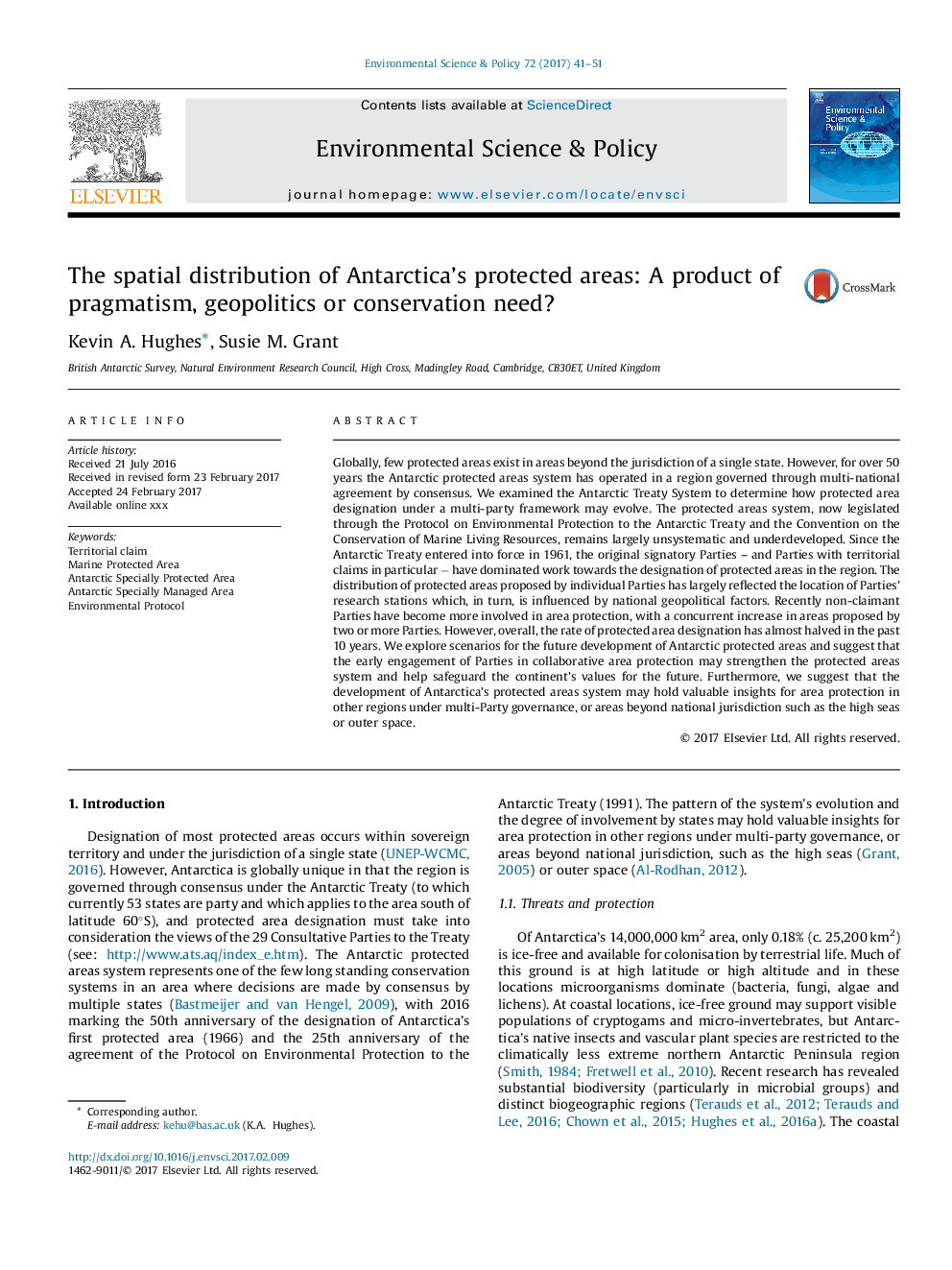ترجمه فارسی عنوان مقاله
توزیع فضایی مناطق حفاظت شده قطب جنوب: یک محصول از پراگماتیسم، ژئوپلیتیک یا حفاظت نیاز دارد؟
عنوان انگلیسی
The spatial distribution of Antarcticas protected areas: A product of pragmatism, geopolitics or conservation need?
| کد مقاله | سال انتشار | تعداد صفحات مقاله انگلیسی |
|---|---|---|
| 96781 | 2017 | 11 صفحه PDF |
منبع

Publisher : Elsevier - Science Direct (الزویر - ساینس دایرکت)
Journal : Environmental Science & Policy, Volume 72, June 2017, Pages 41-51
ترجمه کلمات کلیدی
ادعای قلمروی، منطقه حفاظت شده دریایی، منطقه حفاظت شده قطب جنوب، منطقه ویژه تحت کنترل قطب جنوب، پروتکل زیست محیطی،
کلمات کلیدی انگلیسی
Territorial claim; Marine Protected Area; Antarctic Specially Protected Area; Antarctic Specially Managed Area; Environmental Protocol;

